
5 things to know about Winnipeg’s big sewage problem
115 billion litres, 70 years to fix, $5.5 billion in lawsuits
“You drive around, all you see is a memory,” said Georgina Yahey, a mother who is Dane-zaa and a member of Blueberry River First Nations, who live within one of the most industrially disturbed landscapes in British Columbia.
In 73 per cent of Blueberry River First Nations’ territory, you can’t walk further than 250 metres without encountering evidence of industry. For the average walking pace, that means hitting some kind of road, hydro reservoir, clearcut, pipeline or gas well approximately every three minutes.
Yahey is a descendent of Charlie Yahey, and upholds culture and tradition in her day to day life. Speaking on the phone from the territory, Yahey recounted an experience of driving with a group of Elders in Blueberry territory looking for certain trees and hills that acted as natural landmarks, guiding people around the territory. But the landscape is so destroyed, they could no longer recall exactly where the landmarks once stood.
“They cried,” she said. “I cried with them.”
The cumulative impacts of industry within the 38,300 square kilometres of Blueberry territory are of note right now as the First Nations await a decision by the B.C. Supreme Court on whether or not the high level of industrial encroachment on their lands constitutes a violation of the government’s obligations under Treaty 8.
But in the meantime, the Blueberry are already looking to the future and they’re ready to take the lead on restoration efforts.
“This place will never be the same,” Yahey said, but added she wants her own people out there healing the land, in partnership with western science.
“They really need to give the reins to the people who care most about the land,” she said.
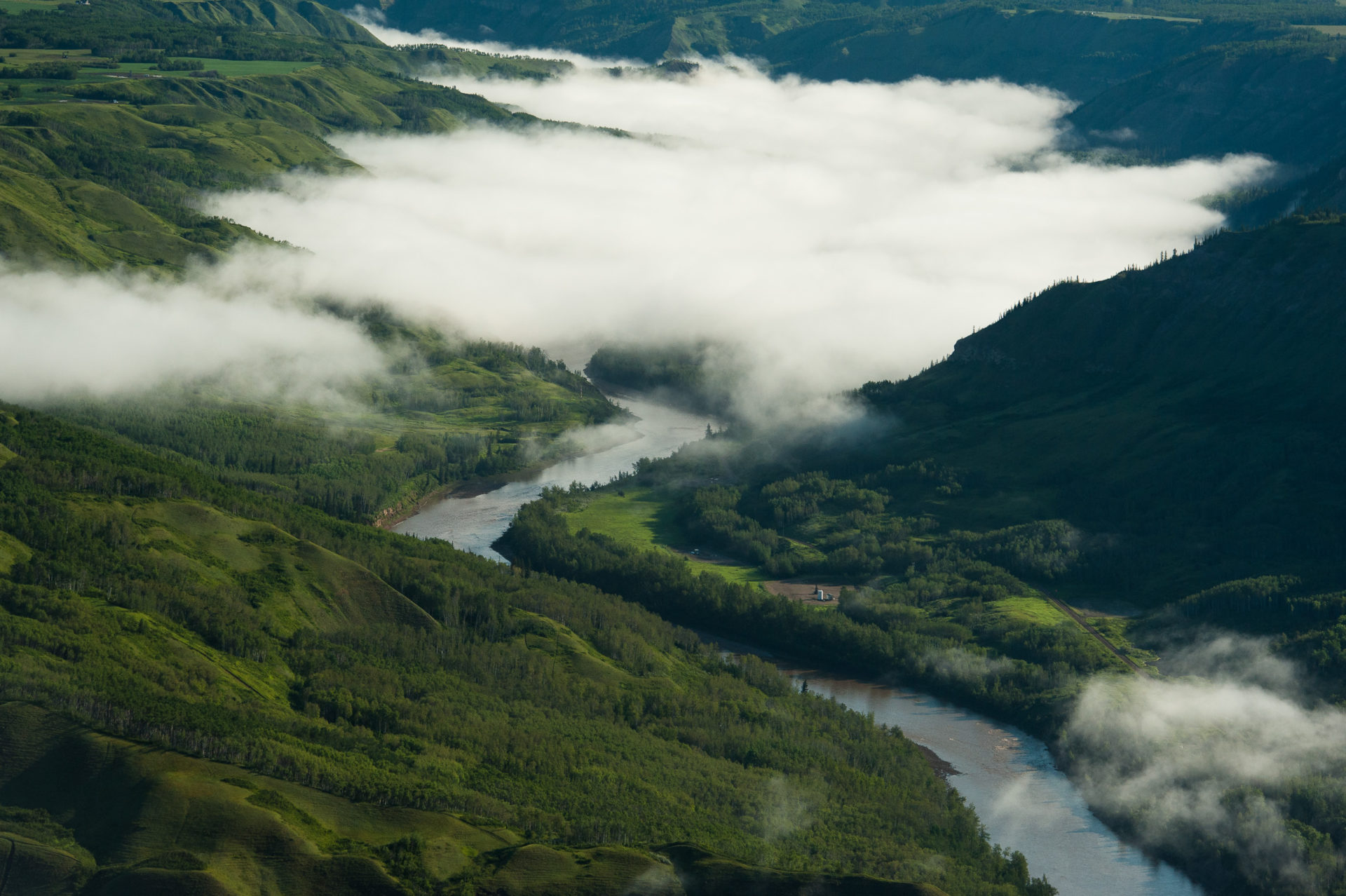
A report released Thursday by the Blueberry and the David Suzuki Foundation outlines a framework to do exactly that. The report argues Blueberry River First Nations are best situated to lead restoration in their own territory, especially within a framework of what the report calls reciprocal restoration, which the report defines as “restoring relationships between the environment and people to what they were prior to disturbance.”
Reciprocal restoration means restoring the health of the land in a way that also restores the health of Indigenous Peoples’ culture, medicines, food security and traditions — and ensuring their relationship with their territory can continue.
Thinking in those terms, “[companies] haven’t met restoration requirements from a cultural or an ecological perspective,” Jane Calvert, land and resource manager for Blueberry River First Nations, told The Narwhal.
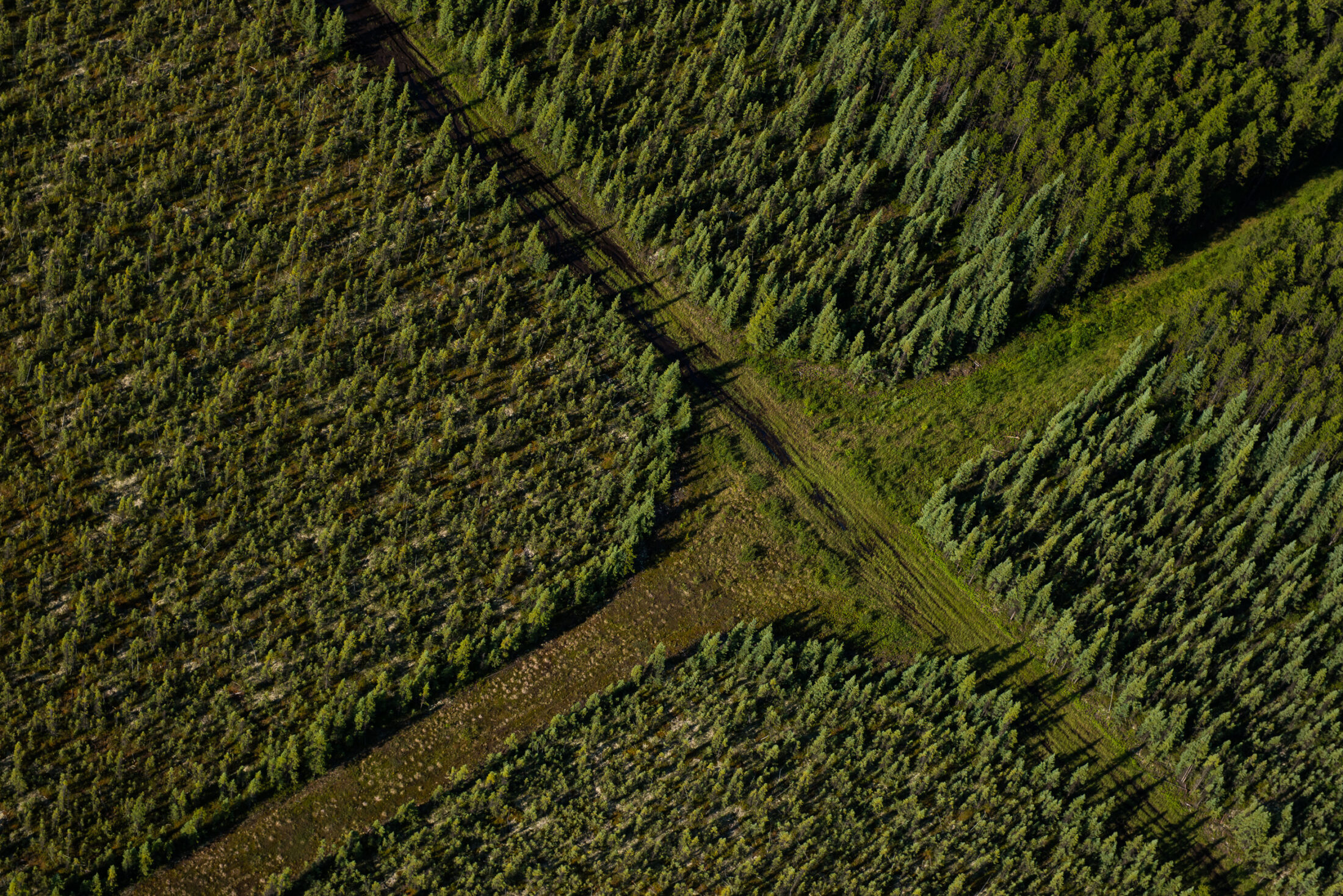
Restoration led by companies is typically site-specific, meaning smaller impacted areas are reclaimed in isolation. But the new report makes a case for a much broader landscape-scale concept of restoration with the whole ecosystem in mind, which can include the reintroduction of species.
As part of industrial restoration efforts, an oil and gas company may cover up a well and sow some grass seed, said Rachel Plotkin, boreal manager for the David Suzuki Foundation, but that won’t significantly contribute to, for example, rebuilding habitat to the level that will support caribou.
“Nature is resilient. But planting single species, that’s not going to cut it,” she said.
Calvert, who is lead author of the report, agreed.
“No offence to golfers, but we don’t want just fields of grass out there,” she joked.
Plotkin said she hopes the new report will influence the provincial and federal governments to allocate more resources to landscape-level restoration.
The report also calls for a “cessation or limitation of further landscape destruction” and the establishment of protected areas in Blueberry territory.
In an emailed statement, the Ministry of Forests, Lands, Natural Resource Operations and Rural Development said it “supports landscape-scale, reciprocal restoration in Blueberry River First Nations territory and elsewhere in the province.”

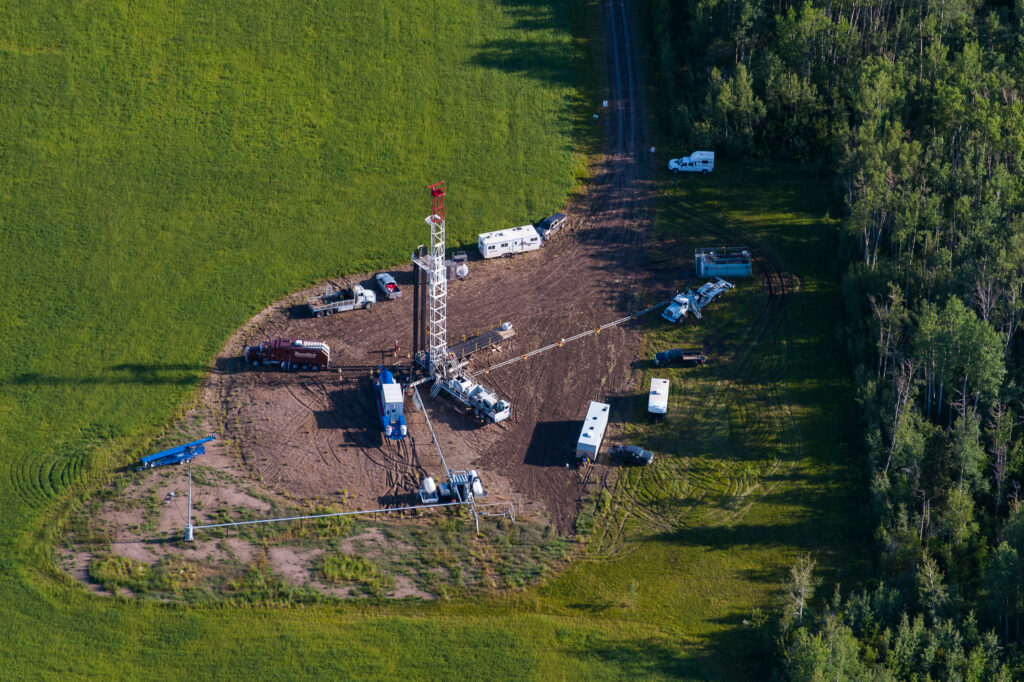
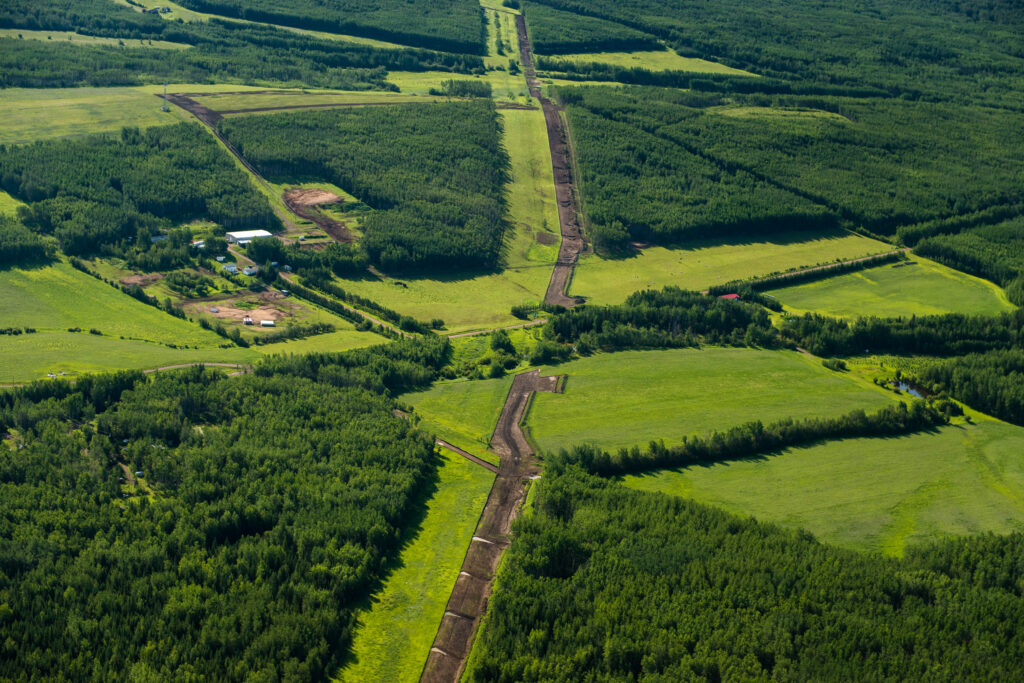
The report comes as Blueberry River First Nations waits on a much-anticipated decision from the Supreme Court of British Columbia in a potentially precedent-setting case first launched in 2015. Chief Marvin Yahey, on behalf of Blueberry River First Nations, sued British Columbia for half a century’s worth of industrial impacts that have been called a “death by a thousand cuts” for the territory.
Georgina Yahey has seen how much the land has changed since she was a child.
She pulled over on the side of the road for a phone interview. While she spoke, she looked over an area of forest, destroyed by fire.
“Every summer, after school was done, we were out in the bush,” she said. “But as time went on, the places we camped at were where [industry] built their projects. Now we can’t go to those places. We can’t drink the water.”
“You should see when we go hunting. We jump in a vehicle, we’re driving. Then we’re like, ‘nope, can’t hunt over there. See those signs, can’t go there. Oh, they’ve built another plant here…’ We go fishing, it’s dirty. It’s not clean anymore.”
She said creeks have dried up, areas that once supported medicinal plants have been wiped out, and bears have begun coming into their communities, she suspects due to lack of food.
Blueberry River First Nations’ right to hunt is protected under Treaty 8, which was signed in 1899. It includes 39 First Nations and encompasses nearly 840,000 kilometres of land across present-day Alberta, Saskatchewan, British Columbia and the Northwest Territories. It protects the Treaty Nations’ right to “pursue their usual vocations of hunting, trapping, and fishing” in their territories.
In court, Blueberry argued the cumulative effects of settlement and multiple industries operating in the territory have impacted their ability to live off the land as they always have, thus violating the terms of the treaty. Blueberry is seeking a permanent injunction that would prevent the province from approving industrial development in parts of the territory.
Gavin Smith, staff lawyer with West Coast Environmental Law, said the term “cumulative effects” may sound boring, but the effects are impacting peoples’ lives in dramatic ways.
“Cumulative effects is declining salmon, it’s declining caribou, it’s climate change,” he said. “It’s all these things that are coming from water use, from forestry, from mining, from oil and gas, from all of these different sectors … and the Crown making all these regulatory approvals without looking at the big picture.”
Cumulative effects wind up impacting ecosystems, livelihoods, Indigenous governance, and public trust in Crown governance, Smith said. And the people who are experiencing negative impacts on their lives the most are often those “living in marginalized positions,” he added.
The B.C. government developed a cumulative effects framework and updated its Environmental Assessment Act in 2019 to allow the Minister of Environment and Climate Change Strategy to order regional assessments, which would look at cumulative impacts. Smith said the problem is that “there’s not a legal requirement” to address cumulative effects.
The cumulative impacts on Blueberry territory are immense. The W.A.C. Bennett Dam, built in 1963, flooded 1,773 square kilometres of forest, contributing to the decline of caribou in the region. The land has also been deeply impacted by the natural gas industry. Blueberry territory sits on top of the Montney formation, one of the largest natural gas deposits in the world.
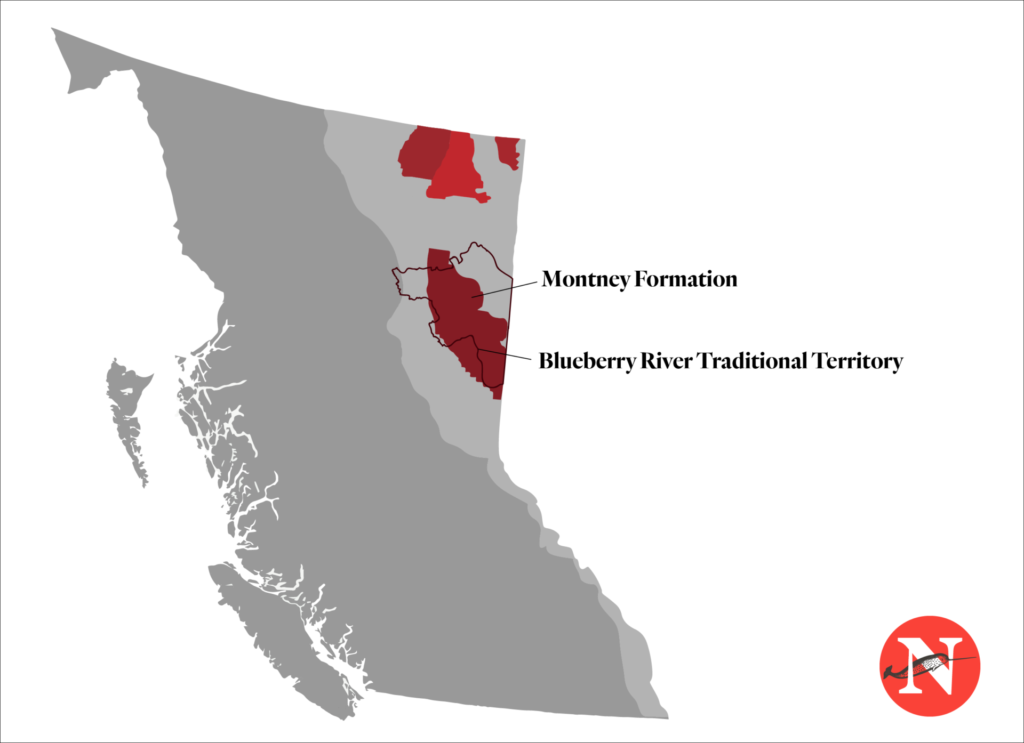
Several Treaty 8 First Nations also stand to be impacted by the Site C dam, which will flood the last tract of the Peace River Valley available to First Nations for traditional practices.
The level of industry on the landscape has put pressure on wildlife, including caribou. The Quintette herd of the Peace Region dropped from about 173 to 74 animals between 2008 and 2018. Only three of the 48 caribou herds in B.C. have stable populations, according to 2020 data from the B.C. Ministry of Forests, Lands and Natural Resource Operations and Rural Development.
Other creatures like moose and grizzly bears are also struggling in the region. It has changed the world the people of Blueberry River First Nations once knew, Plotkin said.
“It feels kind of haunted,” she said.
“You have a skeleton of the natural areas that used to support wildlife, but without the heart of the creatures that used to call it home.”
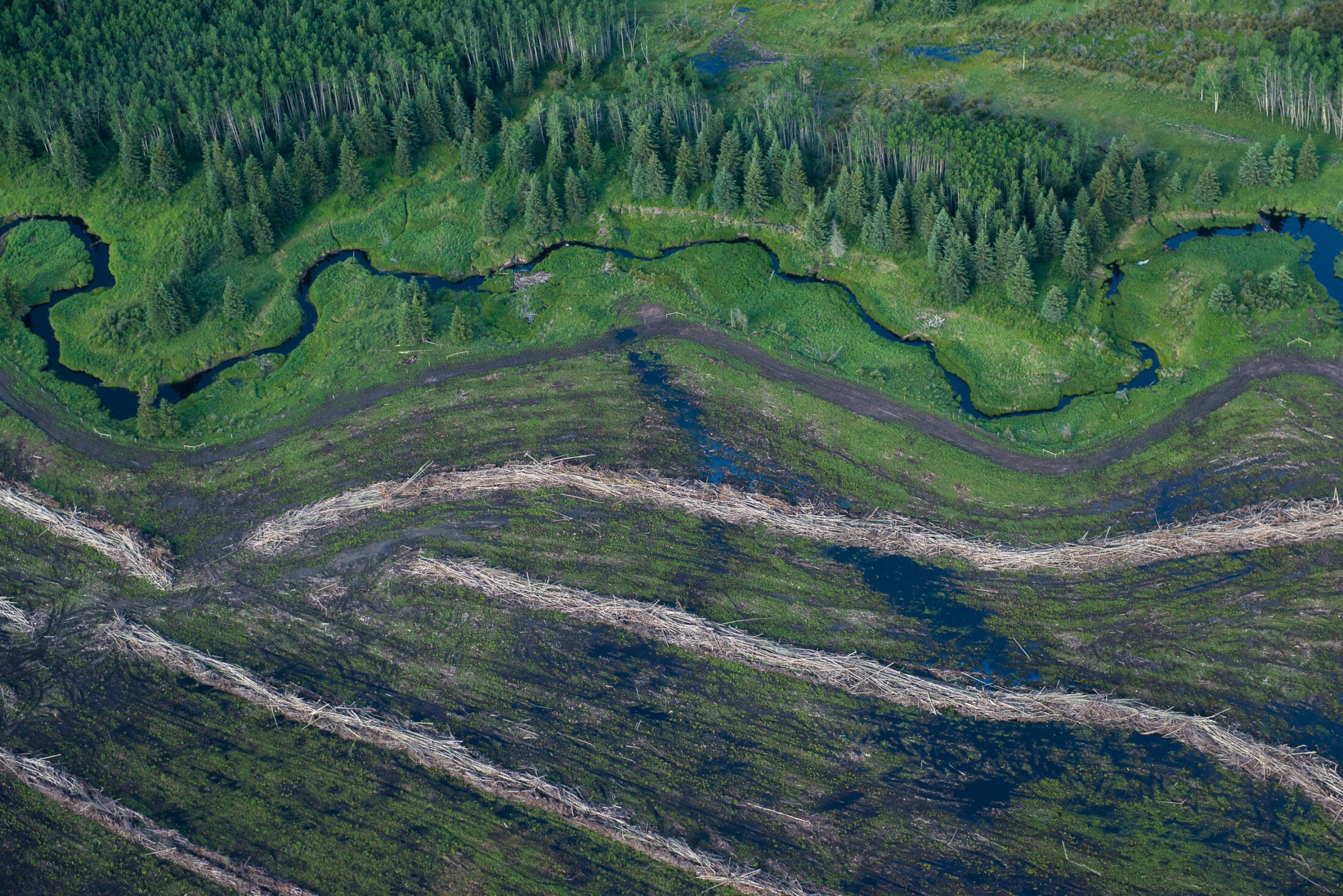
The lack of traditional harvesting, along with low air and water quality, is impacting people’s health, Yahey said. She said she’s seen a rise in people getting cancer.
“[People] are growing up with H2S (hydrogen sulfide, a gas associated with wastewater treatment and oil and gas drilling). Right above us we have a waste station … we have so many damn pipelines and fracking waste pits, we have them all over.”
Yahey said she worries industry is making animals sick, and the only place left to hunt is Pink Mountain — a place that Blueberry River First Nations hopes to make a protected area.
“We need a balance. You need to respect those areas that are very important to us that need to be protected,” she said.
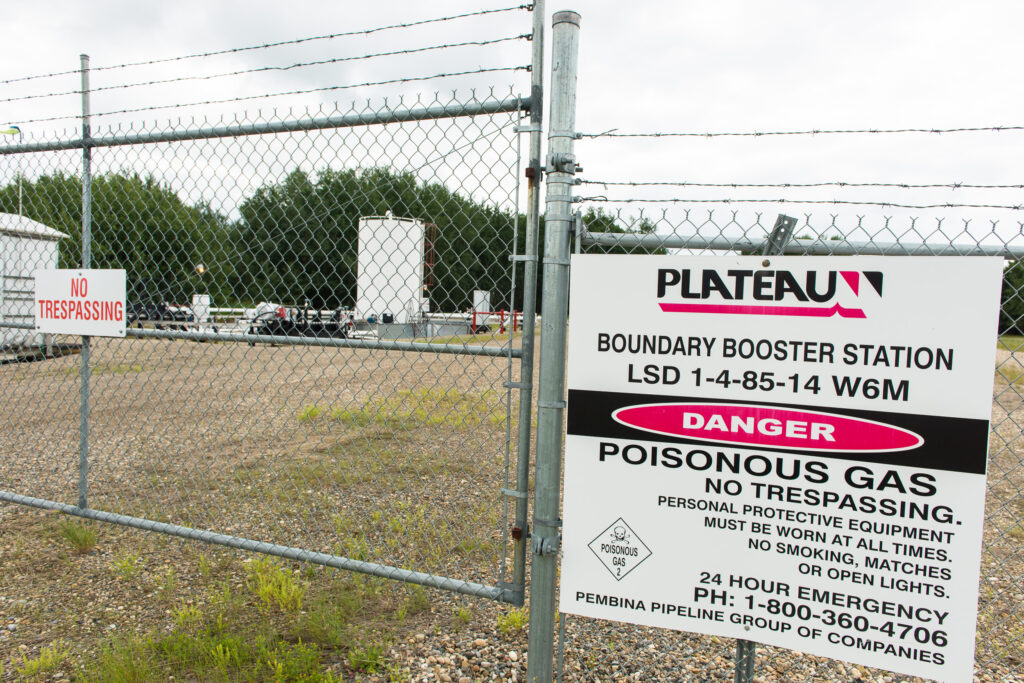
The new report outlines a framework for Blueberry to build up and coordinate site-specific projects so that they amount to landscape-scale improvements that centre Blueberry’s relationship with the land. Steps in the framework include collecting data to evaluate damage to the landscape, setting restoration targets and establishing indicators of success. The framework also includes long-term monitoring of results.
“Landscape-scale indicators, such as the total area of functional old forest, moose habitat quality, or the population size of a culturally important species, should be monitored to track the combined effectiveness of restoration efforts across [Blueberry River First Nations] territory,” the report reads.
“You can’t ever bring the earth back to exactly how it was before. But we want to bring it back as best we can.”
Calvert said the framework is about going beyond the bare minimum requirements to the point that people, the land, and animals like moose, grizzly bears and caribou can thrive.
“You’ve got to ask, is [the landscape] able to support those animals now? Are those animals able to increase their numbers?” Calvert said.
“You can’t ever bring the earth back to exactly how it was before. But we want to bring it back as best we can.”
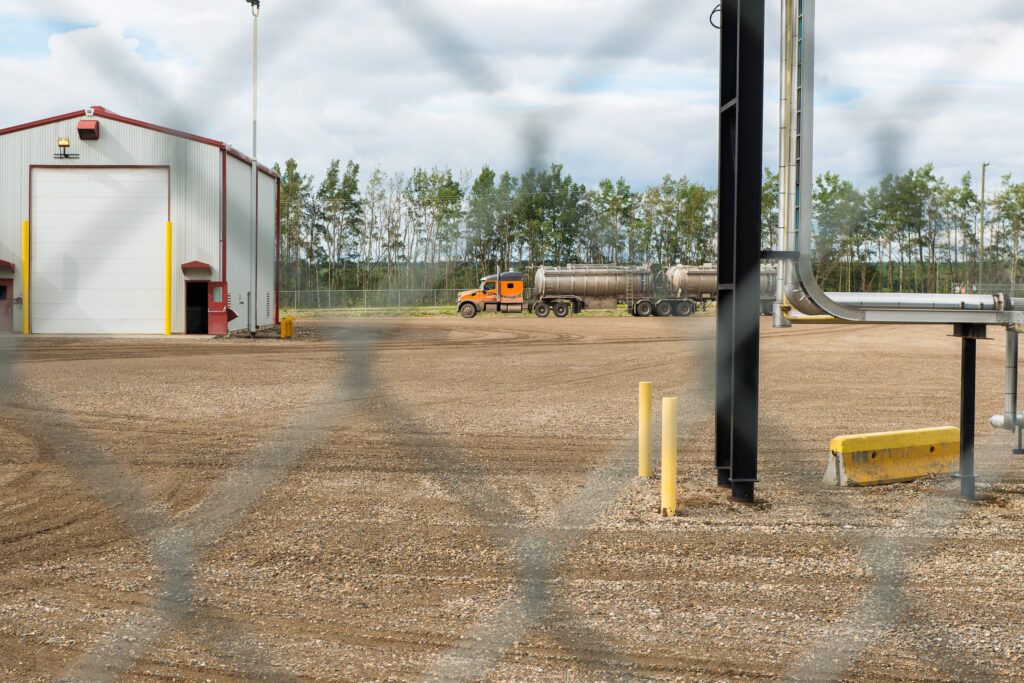
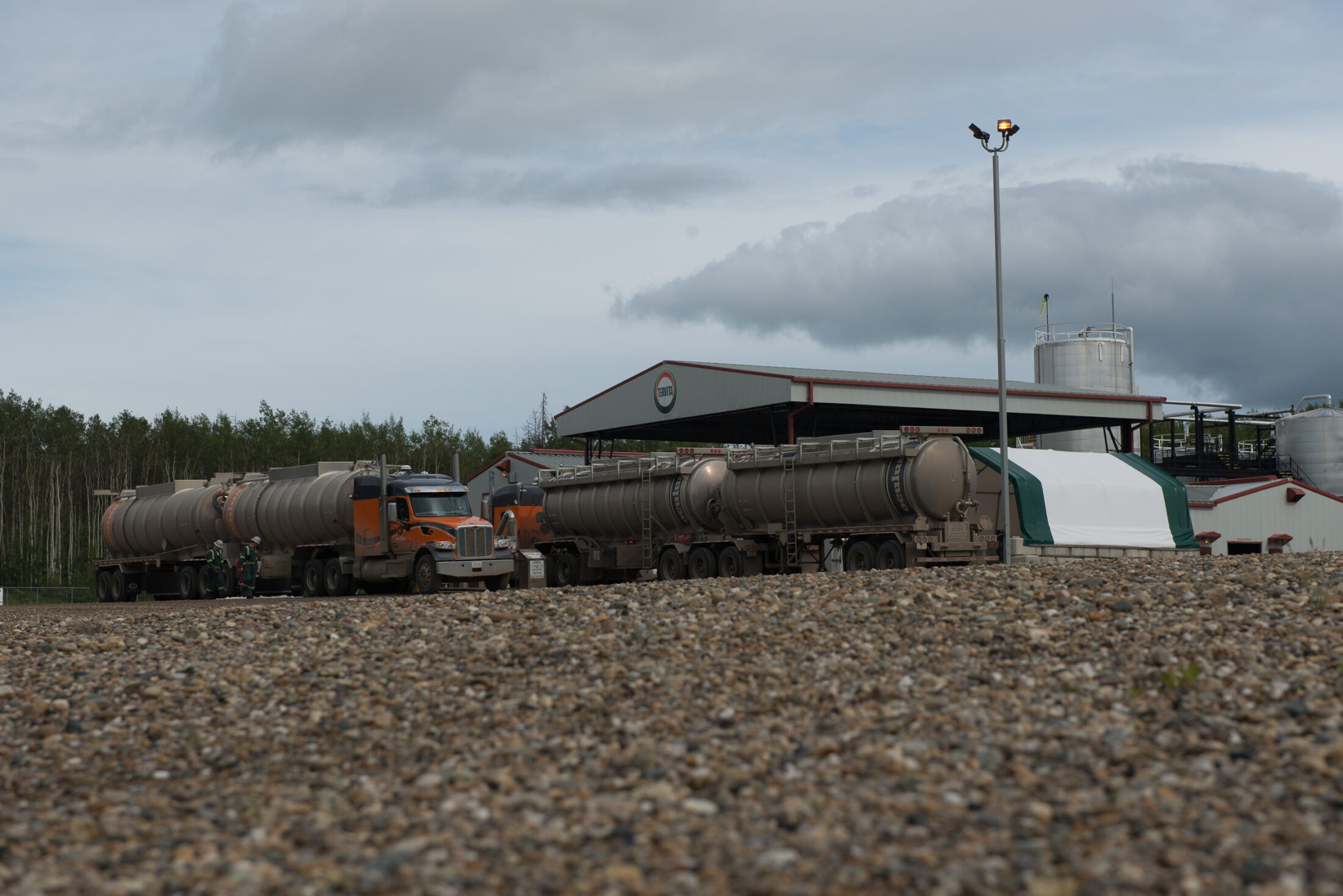
A big component of accomplishing landscape-scale restoration is coordinating goals between Blueberry River First Nations, government agencies and industry, the report says.
For example, Blueberry launched a boreal caribou habitat restoration pilot program in the Black Creek area of their territory designed to benefit the Chinchaga caribou herd. They received provincial funding to take on the project through the Caribou Habitat Restoration Fund, which is managed by the Habitat Conservation Trust Foundation but funded by the province.
Blueberry’s Black Creek project included Blueberry knowledge holders and focused on restoring seismic lines, which are narrow corridors in forests logged by oil and gas companies for exploration. They wind up acting as convenient corridors for predators that prey on caribou.
But after doing site surveys and creating land prescriptions, Calvert said they were informed by the province that the Chinchaga herd was no longer a top priority, and Blueberry wasn’t approved for future funding for the project.
“It was hard to hear, ‘no, you’re not going to get the funding’ … because ‘priorities have changed,’ ” she said.
“We put years into this, and we were right at implementation. The cultural priority hasn’t changed.”
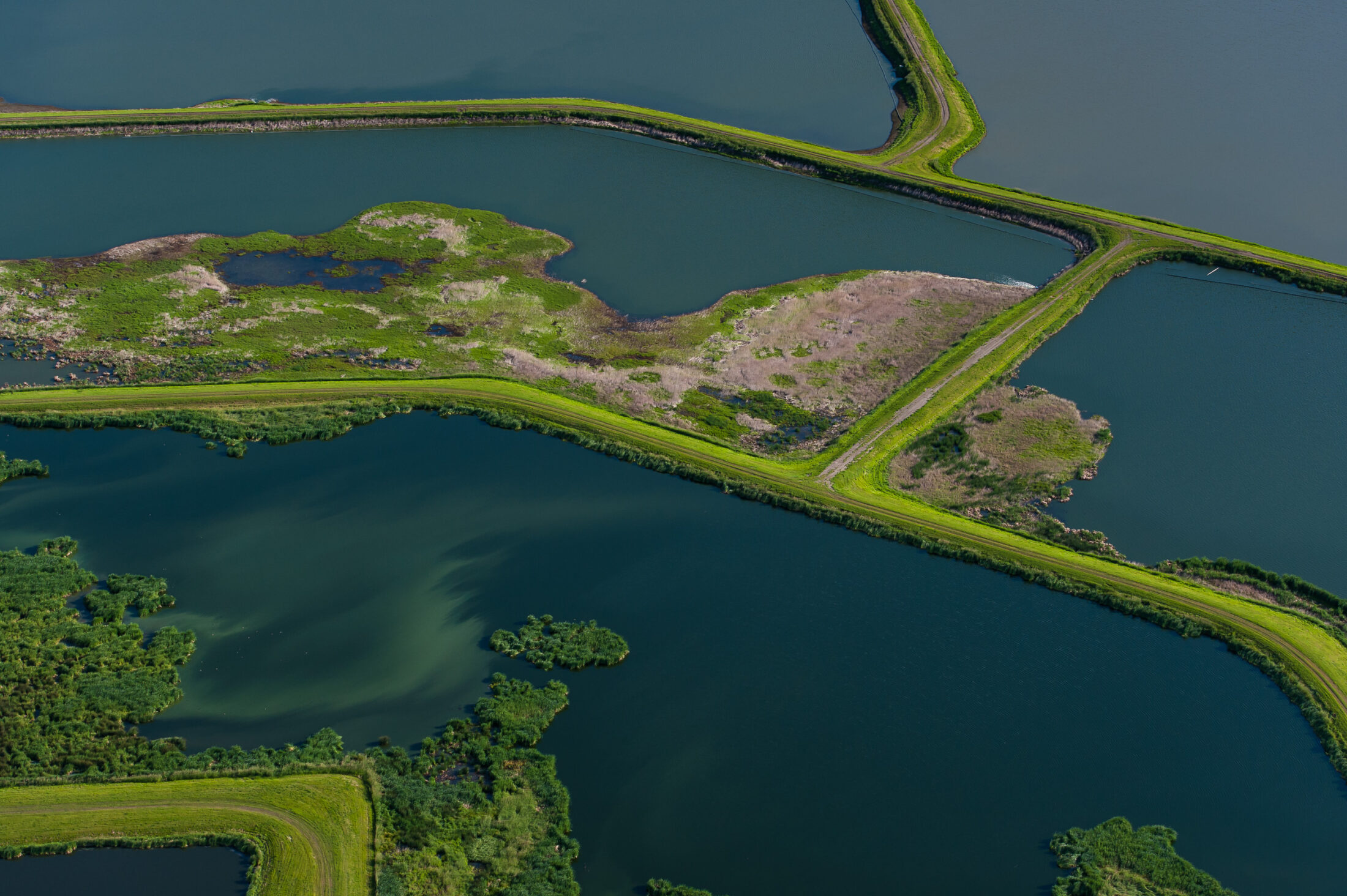
The Ministry of Forests, Lands, Natural Resource Operations and Rural Development confirmed that the province identifies the Chinchaga herd as medium priority in an email to The Narwhal.
A ministry spokesperson said proposals are evaluated by a committee of government experts and external experts by a standard set of criteria, and that this year, “requested funding exceeding the available funding.”
They added that the ministry is finalizing a protection and recovery plan for the Maxhamish, Westside Fort Nelson, Calendar and Snake-Sahtaneh boreal caribou ranges, as well as a plan for the Chinchaga herd, which will “confirm high priority restoration areas at the landscape scale within these ranges.”
Blueberry has several site-specific restoration projects underway in the territory. Now that Blueberry has published the report outlining how to level up their restoration efforts to landscape scale, Calvert said they have begun a three-year process to create a detailed restoration plan.
While it is a daunting task, she said it’s an exciting time for Blueberry River First Nations to take back their role as stewards. She thinks they are “right at the precipice” of introducing landscape-level restoration.
“It’s a huge feat, given the amount of industrial impacts on the land base,” she said.
“The question is how can we bring it back, so [Blueberry] can start recognizing their land again.”
Get the inside scoop on The Narwhal’s environment and climate reporting by signing up for our free newsletter. On a warm September evening nearly 15...
Continue reading
115 billion litres, 70 years to fix, $5.5 billion in lawsuits

Climate change, geopolitics and business opportunities power a blue economy

10 billion litres of sewage are dumped into Winnipeg’s lakes and rivers each year. Some...
